AWS News Blog
New Read Replica Capabilities for Amazon RDS
If you use Amazon RDS, you probably understand the ease with which you can create read replicas to increase the scalability and performance of your database-backed applications.
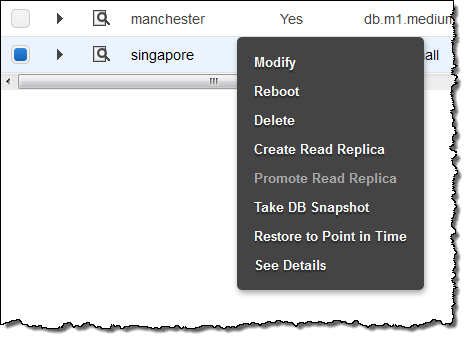
Today we are extending this feature to decrease replica creation time, increase snapshot performance, and give you even more read throughput.
Let’s take a closer look…
Parallel Replica Creation
You can now create multiple read replicas in quick succession (limited to a total of five per master). You no longer have to wait for one creation operation to complete before starting the next one. This new feature will save you time and reduce your administrative burden when creating and maintaining multiple read replicas.
Snapshots and Point in Time Recovery
You have always been able to create database snapshots and to perform point in time recovery operations on your master database instance. You can now perform the same operations on read replicas, as long as you are running MySQL 5.6.
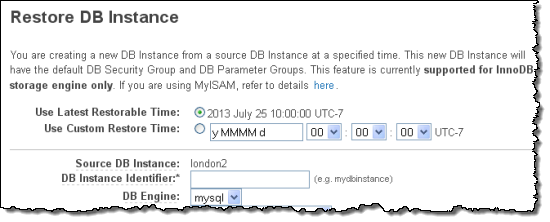
Second-Tier Replicas
You can now create second-tier read replicas if you are running version 5.6 of MySQL. You can create a couple of different topologies using this new feature. First, you can use a single first-tier replica to shift the replication load from the primary instance to the replica in the first tier, like this:
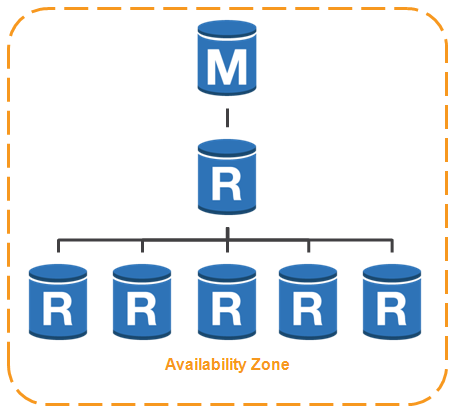
Second, you can use multiple first-tier and second-tier replicas to prepare for an extremely high level of read traffic:
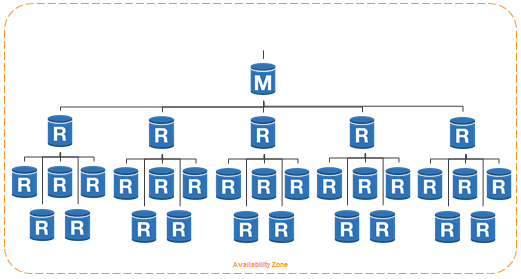
You can create up to five first-tier replicas. Each of these can support up to five second-tier replicas. Therefore, one master can support thirty replicas.
In any architecture where replicas are present, you must be aware of the phenomenon known as replication lag. Each of the replicas must obtain the log data from the master and then apply it locally. You can monitor the replication lag (as seen by each replica) in the AWS Management Console:
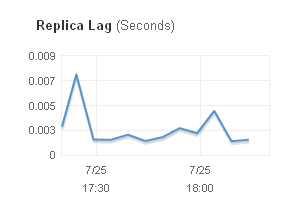
You can use Provisioned IOPS on the replicas and you can choose between eight distinct DB Instance types, starting from the Micro DB Instance and going all of the way up to the High Memory Quadruple Extra Large.
As always, these features are available now and you can start using them today.
— Jeff;